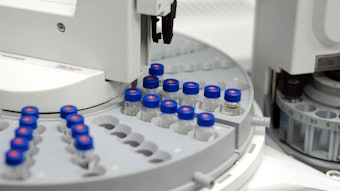Many physiochemical and biological functions of skin care products in the last decade were generally concerned with the stratum corneum (SC). The structure of the SC was proposed as a "brick & mortar model" by Elias in 1981.1 Bricks represented the corneocytes and intercellular lipids (composed of cholesterols, fatty acids and ceramides) formed the mortar. The corneocytes are filled with keratins and embedded in the intercorneocyte lipids, forming lamellar structures that are supposed to be the origin of the skin barrier function.2
Properties of a Pseudoceramide Multi-Lamellar Emulsion In Vitro and In Vivo
Nov 4th, 2011










